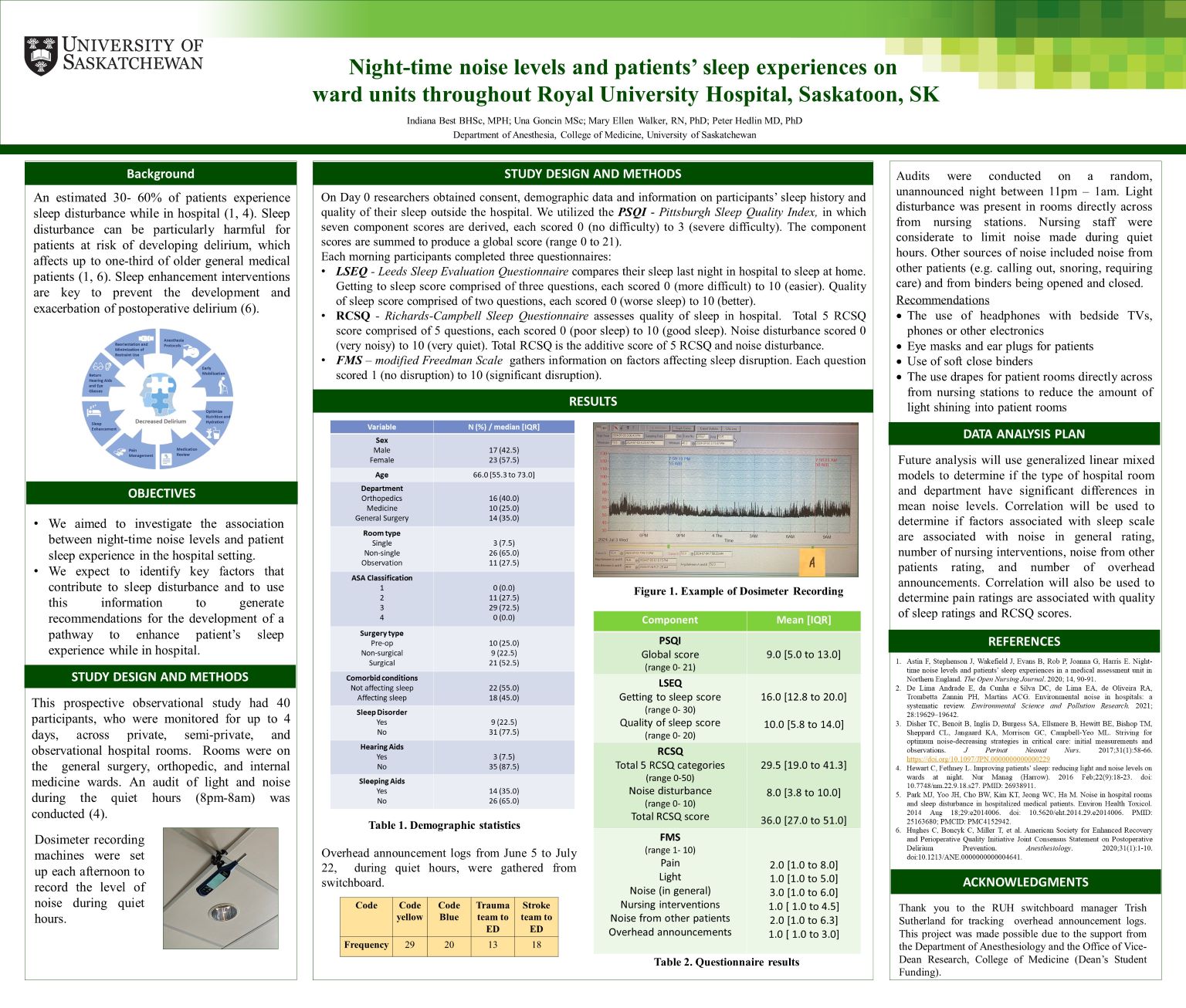
Night-time noise levels and patients’ sleep experiences on ward units throughout Royal University Hospital, Saskatoon, SK
Indiana Best
Approximately 30-60% of patients experience sleep disturbances while hospitalized. These disturbances can increase risk of delirium, which affects one-third of general medical patients over the age of 70. Current literature emphasizes the importance of sleep enhancement interventions to prevent and mitigate delirium. This prospective observational study aimed to identify night-time noise levels and patient sleep experiences in various hospital rooms. Audits were conducted of the general surgery, orthopedic, and internal medicine wards. Forty participants across private, semi-private, and observational hospital rooms were consented and monitored for up to 4 days. Demographic data and baseline sleep history were collected. Dosimeters recorded noise levels in each hospital room during hospital quiet hours (8pm-8am). Each morning, patients completed questionnaires evaluating their sleep quality in hospital versus at home and identifying factors contributing to sleep disruption. Future analysis will use generalized linear mixed models to assess whether different types of hospital rooms and wards have significant differences in mean noise levels. Correlation analysis will be used to: 1) explore sleep scale factors and noise-related variables, such as general noise, number of nursing interventions, and frequency of overhead announcements, and 2) examine relationship between pain ratings with sleep quality and overall sleep scores.
